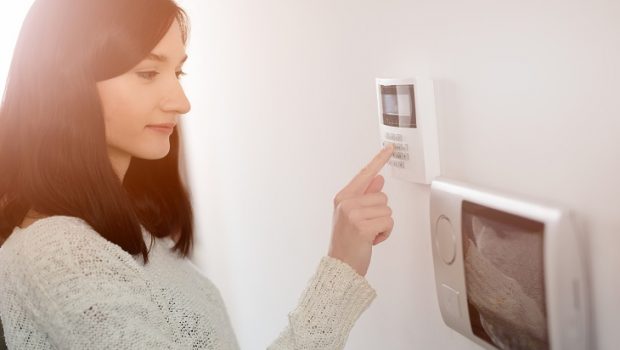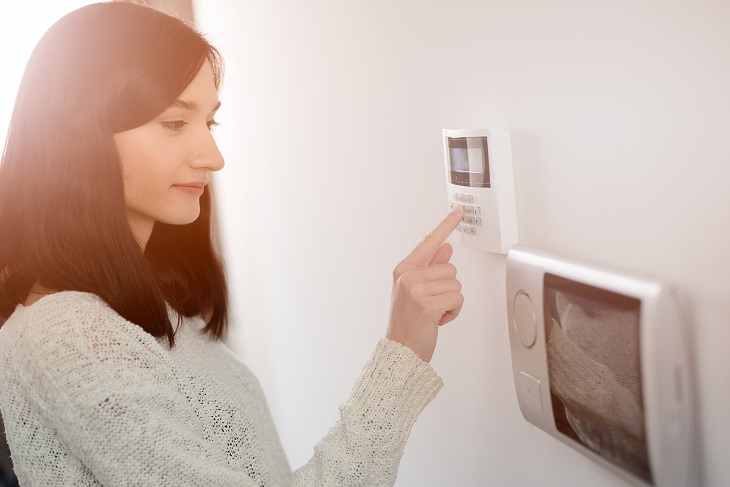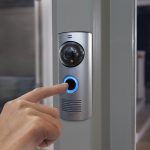How to Make Use of DIY Home Security
There are dozens of great security companies that guarantee safety, but as home automation technology grows in popularity, your options continue to extend far beyond traditional wired systems. You can now customize a DIY home security system according to your personal safety needs. Whether you’re looking for a surveillance camera or want full coverage, you can equip your home with several smart devices to reach the level of security you need.
Why Home Security Is Important
According to the US Department of Justice, more than 10 million households experienced some form of property crime in 2014. This amounts to nearly 10% of all US households, so it’s clear that we need to protect our homes and families as best as possible. For many, this means investing in a 24/7 monitored home security system, but that isn’t feasible—or desirable—for everyone. If you want to add more security to your home, but also prefer to start small and do things yourself, installing a DIY home security system makes the most sense.
How to Get Started with DIY Home Security
Do-It-Yourself security means you avoid pricey installation fees and complicated systems that require regular inspection and repair. These DIY home security systems are often wireless and can be set up in under an hour—best of all, you own them outright. Here are some steps to help you get started.
- Prep Your Home
The first thing to do when beginning a DIY home security effort is to identify which areas of your home you’d like to monitor. Pick a primary room for video surveillance, decide how many doors and windows you want to equip with sensors, and make sure those spots can accommodate the sensors you purchase. To do this, measure and clean surfaces for adhesive devices. You should also determine the best place for wireless security devices based on where your modem is located and how strong your internet connection is.
- Evaluate Products
It’s important to make informed decisions when you purchase home security devices. Look for helpful articles about the specific devices you’re considering and make sure there are primarily positive customer reviews. Look elsewhere if you have trouble finding customer reviews or only find negative reviews because this may mean the brand is not reputable. Once you know which companies you want to purchase from, it’s time to choose your DIY devices.
- Find the Best Devices
Depending on the amount of coverage you want for your home, there are a few things to keep in mind when shopping for DIY home security. Some devices include several different capabilities, while others provide only specific functions. Here are some products to consider when assembling your DIY home security system.
- Smart Security Cameras
Internal and external smart cameras allow you to check on your home while you’re away at work, on vacation, or running errands. Most smart cameras, like the Nest Cam, have motion sensors that alert you of suspicious activity. The Nest Cam also features a built-in microphone that lets you communicate with anyone who is at home—whether it’s a nanny or your child.
- Door and Window Sensors
Many DIY home security kits, such as the SmartThings Home Monitoring Kit, come with easy-to-install door and window sensors that sync directly to your smartphone and alert you of potential break-ins. You can also buy sensors like the Iris Contact Sensor separately if you need to add on individual sensors.
- Alarms
The iSmartAlarm is a great DIY alarm option as it connects to an app so you can conveniently monitor activity all day and night. This company is also launching the iCamera KEEP Pro in early 2017, which is the first DIY smart home camera that uses motion tracking, so you can pair the two products together.
- Security System Hub
It’s effective to pick and choose different aspects of home security to fit your needs, but it’s still helpful to purchase a smart hub that connects and communicates between all of your devices. Samsung SmartThings can accomplish this, and Google Home is another hub that can control your SmartThings, Nest, and other security devices.
- Install Your Products
Once you’ve chosen your DIY security devices, all that’s left to do is install them. Some smart devices require that you plug a base into your router and place compatible wireless sensors throughout your home. All of the devices listed above are easy to install, but if you have any difficulty, most companies provide online customer support.
After you successfully connect your DIY home security system, you will officially be ready to protect your home with more confidence than ever before.
Author Bio:

Sage is a home and community safety expert for SafeWise. Sage has written for a variety of audiences ranging from government sites to lifestyle magazines. In her free time, she enjoys wedding planning, traveling and learning French.
















